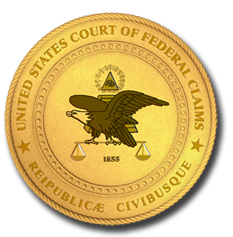Lead attorneys appointed in Hurricane Harvey flood litigation
Lead attorneys appointed in Hurricane Harvey flood litigation
By Alyson Ward Published 6:30 am, Wednesday, November 22, 2017
Federal judges Tuesday selected the lead attorneys to help guide the post-Harvey litigation involving the Addicks and Barker reservoirs, according to court records. The handful of well-known lawyers, most of them local, will wrangle a large and expanding number of lawsuits filed by property owners who were flooded by the reservoirs in late August.
It's the next step in a long, complex legal battle that will determine whether businesses and homeowners near the reservoirs will be compensated by the government for property lost or damaged by floodwaters.
More than 1,000 homeowners and business owners have filed more than 100 federal lawsuits so far - a mix of individual, multi-party and class action suits seeking more than $100 million in damages. The number of claimants is certain to grow, as is the dollar amount.
A specialized federal claims court has divided up the sprawling, unwieldy litigation, separating the complaints into two distinct groups of property owners - upstream and downstream. Within those groups, they have again divided property owners in individual lawsuits from those who are a part of class action suits.
Upstream, downstream
The attorneys appointed to head up the upstream litigation are Daniel Charest, Charles Irvine, Larry Vincent, Armistead Easterby, Ian Heath Gershengorn and Vuk Vujasinovic. Attorneys leading the counsel for downstream clients, meanwhile, are Rand Nolen, Derek Potts, Richard Mithoff, William S. Consovoy, David Frederick and Jack E. McGehee.
"I think that the way the court structured this is going to be very helpful," said Mithoff. "The process seems a little bit complicated on its face," he said, but breaking the litigants and their lawyers into groups will allow the case to move more efficiently toward trial.
Upstream and downstream property owners all flooded because of proximity to the reservoirs, but the reasons for their suits are different. Downstream clients filed suit alleging that because the Army Corps released water through the dam gates, knowing it would cause Buffalo Bayou to steadily rise and flood their neighborhoods. Upstream clients, on the other hand, sued because the Army Corps elected not to release enough water, causing it to pool behind the earthen dams and eventually flow around the ends of the reservoirs into adjoining subdivisions.
Like eminent domain
For both groups, attorneys will focus on the Fifth Amendment's "taking" clause, Mithoff said: By allowing the areas around the reservoirs to flood, the Army Corps was taking private property for a public purpose.
"The case essentially is very similar to an eminent domain case, where the government decides they need to take your house in order to build a freeway," he said. "The government has the authority to do that, but the government has to pay you fair value to do so."
Mithoff, a Houston personal injury lawyer, is no stranger to winning big payoffs for large groups of people. He negotiated a $2.3 billion settlement with the tobacco industry for Harris and other counties, and he won $80 million for residents of a nursing home who were killed in a 2005 bus explosion while fleeing Hurricane Rita.
The case could stretch out for years, but Mithoff is optimistic that the initial stages - determining jurisdiction and discovering evidence - will stay on schedule, allowing for a trial to begin in late 2018.
Chief Judge Susan Braden of the U.S. Court of Federal Claims "has expressed an interest in moving this litigation very promptly," he said. "And I think there's a sincere effort being made to do this."
http://www.chron.com/news/article/Lead-attorneys-appointed-in-Hurricane-...
